Definition: The term “market equilibrium” refers to the scenario that arises when the price at which the quantities of product provided and demand are equal. In free and unfettered competition markets, the prices at which buyers and sellers meet are determined by the product’s demand and supply.
When a market has reached equilibrium, there is no change in the price of the product.
The market equilibrium is depicted below in the form of a diagram. The figure assumes that the equilibrium price is P1 and the equilibrium quantity is Q1.
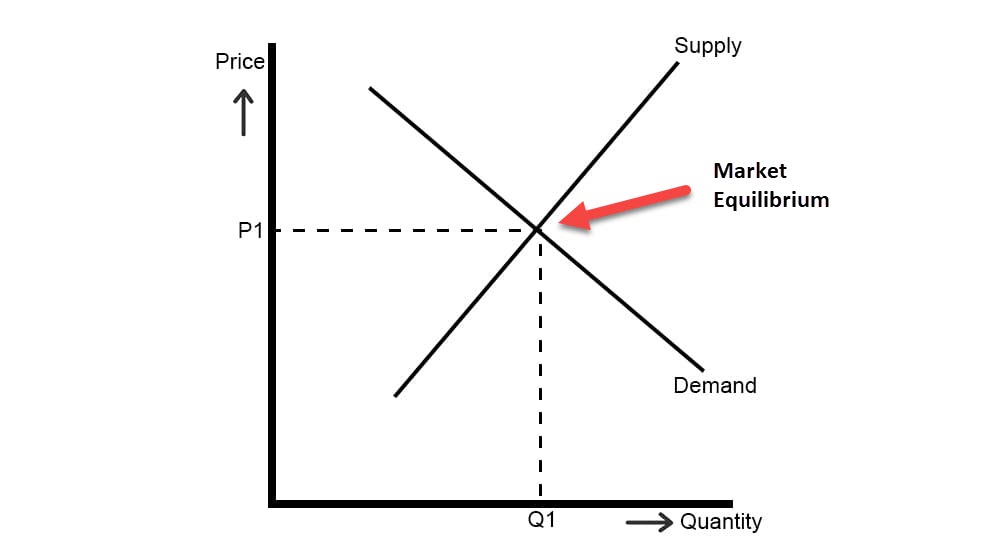
When the price is below the equilibrium price, the graph would like as follows:
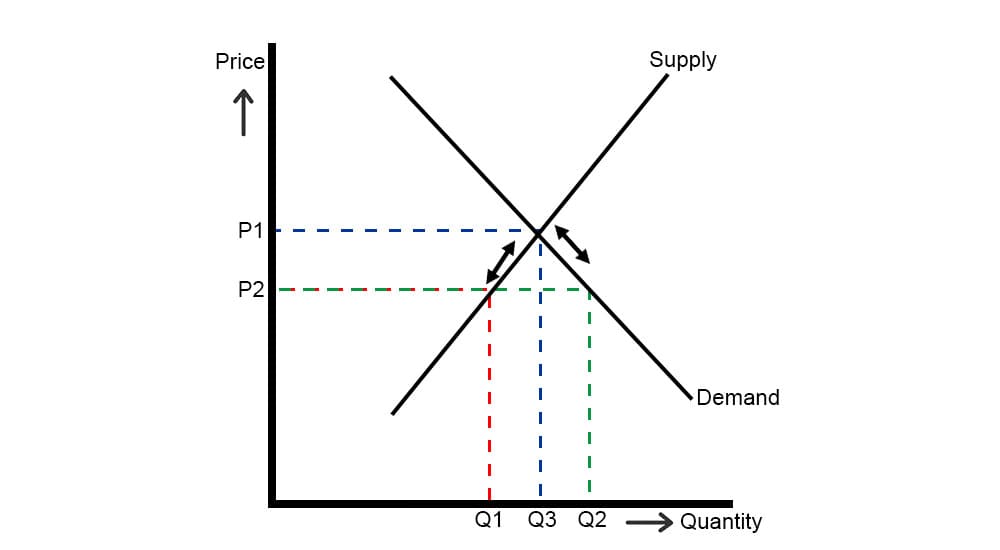
Consider P2 to be the price below the point of equilibrium. Because there is a greater demand than there is supply in this situation, there will be a shortage (Q2 – Q1). As a consequence, businesses will raise both the price and the supply. The demand will also shift along the demand curve, which will result in a lower level of consumer interest in the product.
The price will continue to rise up to P1 until there is no longer a scarcity and the demand and supply are in equilibrium.
If the price is above the equilibrium price, the graph would like as follows:
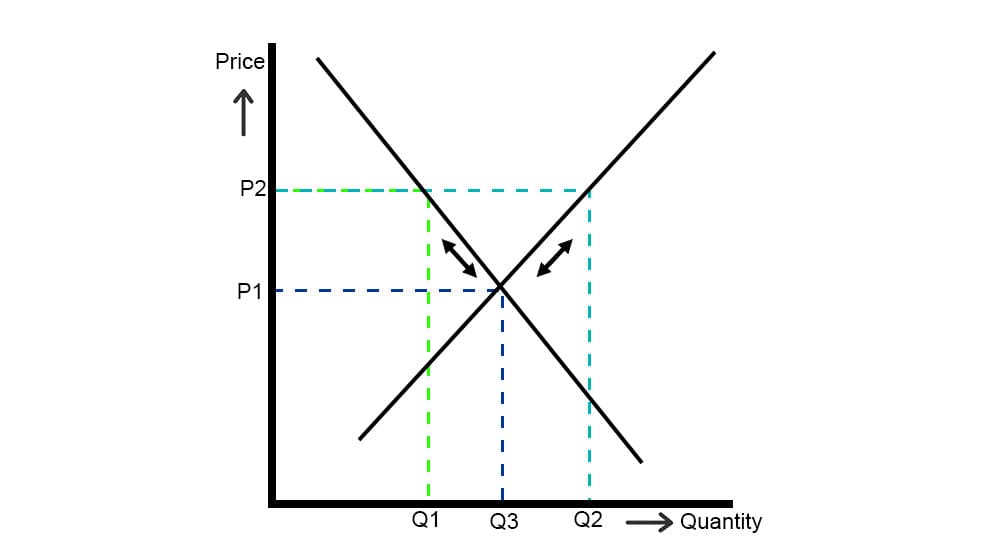
Think about the fact that the price P2 is higher than the price P1. In this scenario, the market will have a surplus of supply, often known as an oversupply, because the supply (Q2) will exceed the demand (Q1) for the good or service being offered.
As a result of this circumstance, the businesses will lower both the price and the quantity of the goods. Because of this assistance, there will be an increase in demand, which will eliminate the surplus.
At the price of P1, Q3 constitutes the new market equilibrium.
If there is any increase in demand, the equilibrium curve will look as follows:
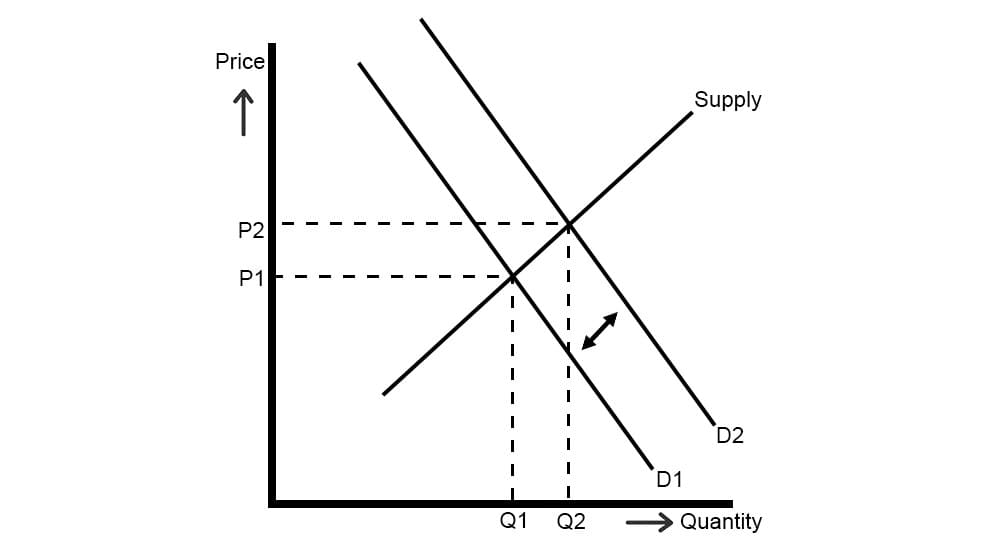
For demand increase, the curve (D1) will shift to the right (D2). In the beginning, the product will be in shortage. Therefore, the price and supply would increase the new equilibrium in Q2 and P2.
If there is any increase in supply, the equilibrium curve will look as follows:
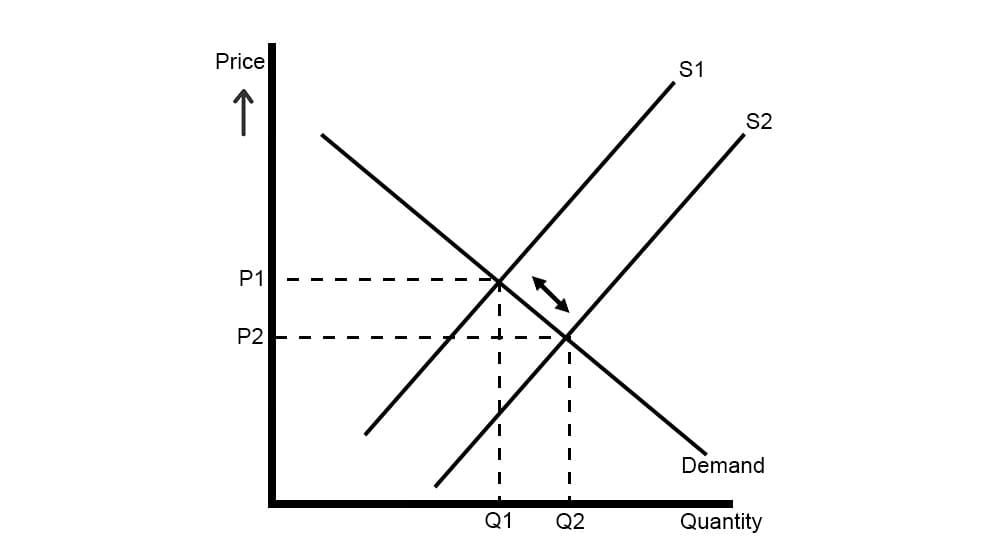
An increase in supply will cause businesses to reduce the price and increase the supply. The new equilibrium will be P2, and Q2 is the new quantity.
Example of Market Equilibrium
Let’s imagine a company is the market leader in their particular sector, and they charge 1,500 USD for a refrigerator with double doors. On the other hand, several competitors have entered the same market category and introduced products that are very comparable. Because of this, there has been a decline in sales, and the warehouse now has an excess inventory.
Because there is an excess supply of the goods, the company has decided to lower the price to 100 USD. After one month, the company analyzes its performance and discovers that, despite an increase in sales, there is still an excess of inventory.
So they further reduced the price of the product by 150 USD, and now the new product price is 1,250 USD and did not reduce the production quantity.
After one month, they again review the status is see that they don’t have any inventory surplus and the sales quantity is equal to the produced quantity.
Now the market has reached the equilibrium position.
Summary
The interaction between supply and demand determines pricing strategies in a free market. The product price will go up if there is a limited amount of the product, while a surplus quantity will bring the price down. This pricing mechanism defines the quantity of a product that must be manufactured by the companies to achieve a state of equilibrium.
